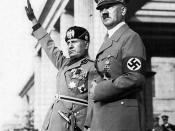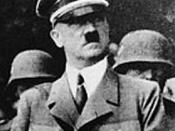There are two different opinions regarding Germany's move towards Nazism in the 1930s and how it reacted to modernity. The notion of a conservative revolution in Germany sees the move to Nazism as a rejection of the changes of the Nineteenth-century in an attempt to move to a better future. Similarly, the idea of a reactionary modernism sees a movement for a rejection of certain parts of the modern heritage, much in accord with notions of the Sonderweg, or Germany's supposed special path to modernity. Definition and explication of both of these concepts, on their face appearing as paradoxes, is difficult, however, for Weimar Germany these notions were enormously powerful, seemingly influencing great masses of people to groups like the Nazis. Modernity has often been seen in connection with the Enlightenment with social criticism based on the Enlightenment paving the way for modernity. A more or less evolutionary development toward an ever better society was the thrust of this view, with social engineering an illustrative concept.
Confidence in the capacity of social and economic thought to contribute to the improvement of society has been an important proponent of this view, which exists both in a Marxist and a liberal functionalist version.
The concept of Enlightenment was first pushed forward with the ideas of freedom and equality, merged in the motto of the French Revolution, and then later on split up and expressed in the two ideologies of liberalism and socialism. It is here that the ideas were corrupted and eventually lead to the complete domination of Germany by Nazism. Modernism was the vogue in Germany before World War I and was leading societal changes. Many of the new views and concepts were coming out of Germany during that time, the Bauhaus School being a prime example. With these changes came...


